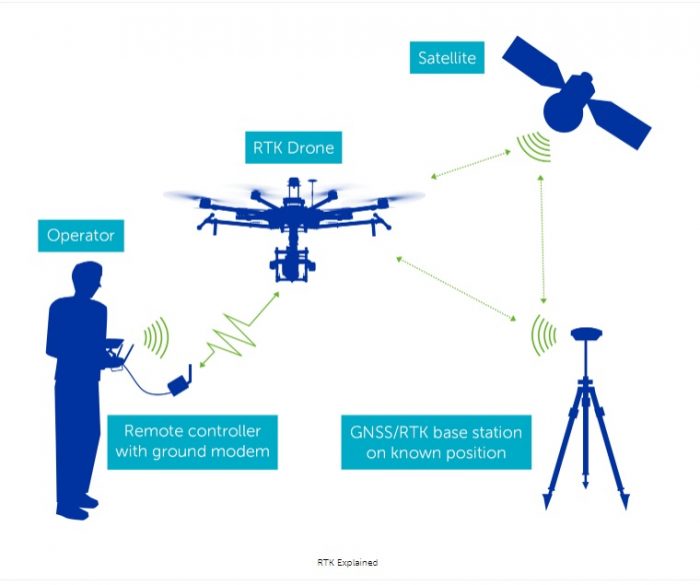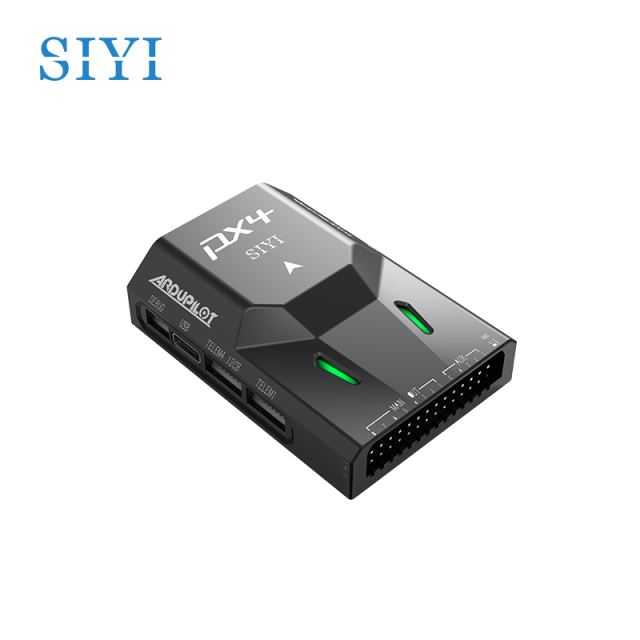SparkNavi Drone Flight Controller and GNSS/INS Made in Taiwan: Precision and Technology
SparkNavi Drone Flight Controller and GNSS/INS Made in Taiwan: Precision and Technology
Blog Article
Understanding the Vital Attributes and Features of a Drone Trip Controller for Optimum Airborne Performance
The flight controller serves as the essential component in a drone's design, orchestrating its movements and making certain stability through an innovative interplay of sensors and information processing. With improvements in innovation, the landscape of trip controllers is swiftly developing, prompting a closer evaluation of what really defines ideal performance in this critical system.
Summary of Trip Controllers
When exploring the globe of drone technology, comprehending trip controllers is necessary for both hobbyists and specialists alike. Trip controllers serve as the mind of the drone, orchestrating its activities and making sure stability throughout trip (SparkNavi drone flight controller and GNSS/INS made in taiwan). They process information from numerous sensors, consisting of measures, accelerometers, and gyroscopes, to keep equilibrium and reply to pilot inputs effectively
The design of trip controllers can differ considerably, varying from basic variations designed for entry-level drones to sophisticated systems outfitted with advanced functions for specialist applications. The integration of GPS abilities allows specific navigating and positioning, while programmable firmware enables customers to customize trip attributes to fit their specific demands.
Moreover, flight controllers are crucial in facilitating communication between the drone and the remote control, making it possible for real-time changes and telemetry data transmission. Recognizing the various sorts of trip controllers, consisting of multi-rotor, fixed-wing, and crossbreed systems, is crucial for choosing the proper version for a given application. Eventually, an extensive grasp of flight controllers not only enhances the flying experience but also optimizes the efficiency and security of drone procedures.
Trick Features of Trip Controllers
Trip controllers play an essential role in taking care of a drone's trip characteristics by carrying out several essential functions that guarantee security and responsiveness. Among the main functions is the stabilization of the drone's alignment and elevation. This is attained via the assimilation of various sensors, consisting of accelerometers, barometers, and gyroscopes, which continually keep track of the drone's position and movement.
.jpg)
Another important feature is the processing of control inputs from the pilot or autonomous systems. The trip controller translates these inputs and readjusts the drone's electric motor speeds as necessary to attain the wanted trip path. This consists of managing yaw, roll, and pitch, which are crucial for ability to move.
Additionally, trip controllers are equipped with sure systems. These functions are developed to reply to crucial situations, such as reduced battery levels or loss of signal, by starting predefined actions like returning to the launch factor or hovering in position.

Important Attributes to Consider
When choosing a drone trip controller to ensure ideal efficiency and reliability,Numerous crucial functions need to be taken into account. One critical aspect is the controller's processing power, which establishes its ability to deal with intricate trip formulas and real-time data handling. A higher handling capacity enhances responsiveness and stability during trip.
An additional important function is the variety of sustained trip modes. A functional flight controller should supply numerous settings, including acro, altitude hold, and GPS-assisted modes, satisfying different pilot ability degrees and functional situations. Additionally, the presence of integrated security attributes, such as fail-safes and geofencing, can significantly boost operational safety and security.
Compatibility with different interaction procedures is additionally crucial, as it ensures seamless assimilation with various other tools and peripherals, such as remote controllers and telemetry systems. The controller's firmware should be easy to use and on a regular basis upgraded to integrate new features and optimizations.
Integration With Sensors and Equipments
A trip controller's efficiency recommended you read is greatly influenced by its capability to integrate with numerous sensing units and systems. This combination is essential as it enables the flight controller to obtain real-time data required for efficient trip management. Secret sensing units consist of GPS, inertial measurement units (IMUs), measures, and magnetometers, each supplying important information pertaining to the drone's placement, elevation, and orientation.

In addition, advanced flight controllers support integration with payload systems, consisting of cams and other sensing units, making it possible for improved functionalities such as independent navigation and barrier evasion. This interconnectedness not only improves the drone's functional capabilities but additionally broadens its application potential throughout various markets, from airborne photography to farming monitoring. Hence, a well-integrated flight controller is essential for achieving ideal aerial performance and making certain the dependability of drone procedures.
Tips for Optimizing Performance
To maximize the efficiency of your drone, numerous key methods can be employed that emphasis on optimizing both equipment and software application components. Make sure that the flight controller firmware is up to day. Makers frequently release updates that improve security, boost performance, and fix insects. Routinely looking for these updates can considerably influence your drone's performance.
Next, adjust your sensors, including the accelerometer and gyroscope, to guarantee accurate readings. Correct calibration lessens drift and improves flight stability, particularly during complex maneuvers. Furthermore, consider upgrading the equipment parts, such as props and motors, to boost thrust and effectiveness. her latest blog High-quality propellers can minimize drag and increase flight time.
Additionally, maximize your drone's weight by reducing unnecessary hauls. A lighter drone not just performs better but additionally expands battery life. Lastly, tweak your flight setups, including PID (Symmetrical, Essential, Acquired) worths, to attain smooth and receptive handling. By executing these methods, drone drivers can dramatically boost aerial performance, bring about a more pleasurable and effective flying experience.
Conclusion
To conclude, a thorough understanding of drone flight controllers is critical for enhancing airborne efficiency. The combination of vital features and vital features, including handling power and security mechanisms, straight affects the security and ability to move of drones. Reliable communication with various sensing units and systems plays a crucial role in attaining exact navigation and operational performance. By prioritizing these components, operators can dramatically raise the efficiency and reliability of their drone systems in varied applications.
Flight controllers serve as the mind of the drone, orchestrating its motions and making certain stability during trip.Trip controllers play a pivotal function in taking care of a drone's flight dynamics by carrying out numerous key functions that make sure security and responsiveness. The trip controller interprets these inputs and readjusts the drone's electric motor speeds appropriately to achieve the wanted flight path.Many you can try these out crucial features ought to be taken into account when choosing a drone trip controller to make certain optimum efficiency and reliability. Thus, a well-integrated trip controller is fundamental for achieving ideal airborne performance and making certain the reliability of drone operations.
Report this page